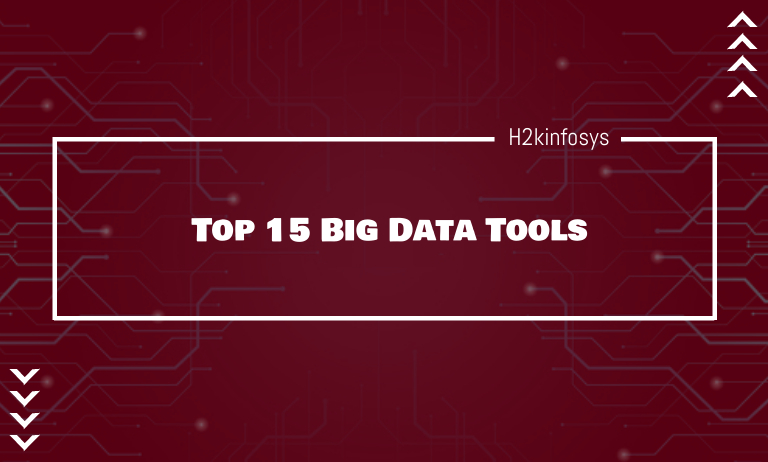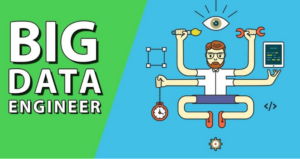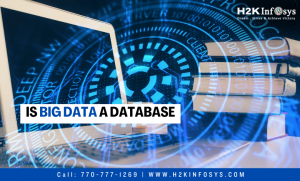Digital Information is everywhere in this little world. Social media apps are collecting data at enormous speed. This data is not in kilobytes or megabytes; it is in terabytes. Data is senseless until it shifts into valuable data and knowledge, which can help the administration in decision making. For this objective, we have many top big data software available in the market. Big data software helps in analyzing the terabytes of data.
1) Hadoop
The best and most used big data framework in the market is Apache Hadoop. Distributed processing of large data sets is possible using Hadoop across clusters of commodity computers. It is one of the adequate big data tools developed to scale up from individual servers to thousands of commodity machines.
Features:
- Strong security while using HTTP servers.
- Hadoop have Compatible Filesystem
- Authorization for POSIX-style filesystem with comprehensive attributes
- It consists of many big data technologies and tools that deliver a strong ecosystem that is well fit to satisfy the analytical requirements of the developer
- Data Processing is straightforward in Hadoop
- Faster Data Processing due to distributed processing.
2) HPCC:
High-Performance Computing Cluster(HPCC) is a complete big data tool over an admiringly scalable supercomputing platform. HPCC is also known as DAS (DataAnalytics Supercomputer). LexisNexis Risk Solutions developed this tool.
Features:
- In HPCC, we need little code to accomplish big tasks efficiently.
- HPCC offers high redundancy and availability
- HPCC supports complex data processing on a thor cluster
- It has a Graphical User Interface IDE for simple testing, development, and debugging
- In parallel processing, code is automatically optimized.
- HPCC supports scalability and performance
- The code compiles into C++
3) Storm
The Storm is a free, open-source computation big data system. The storm system offers the best distributed real-time, fault-tolerant processing with real-time analysis abilities.
Features:
- It can process one million 100 byte data per second per node.
- For parallel calculations, it has many tools that operate across a cluster of computers.
- If a node dies, it automatically restarts. The work is shifted to another node.
- Storm ensures that individual units of data will undergo processing at least onetime.
- Once deployed Storm is undoubtedly the most accessible tool for Bigdata analysis
4) Qubole
For autonomous Big data management, Qubole is one of the best platforms. It is an open-source tool that is self-maintained, self-optimizing, and lets the data team concentrate on business results.
Features:
- For every use case, it provides a single platform.
- Qubole have Engines that are optimized for the Cloud and is open-source
- Thorough Security is available in Qubole
- Delivers actionable Alerts, Insights, and Guidance to maximize trustworthiness, performance, and expenditures
- Automatically passes policies to bypass executing redundant manual actions
5) Cassandra
The Apache Cassandra is a database that is utilized today to provide adequate management of large quantities of data.
Features:
- Aid for duplication across multiple databases by delivering lower latency for users
- Data is automatically replicated to numerous nodes for fault-tolerance
- It one of the best big data tools that are most appropriate for companies that can’t lose data, even an entire data center is down
- Cassandra presents help agreements and benefits are accessible from third parties
6) Statwing
In the statistical world, one of the best big data tools is, Statwing. It was created by and for big data analysts. Its modern graphical user interface selects statistical tests autonomously.
Features:
- Statwing can analyze any data every efficiently in less amount of time.
- Statwing supports in the cleaning of data, analyze associations, and construct graphs in minutes
- It enables the user to create histograms, scatterplots, heatmaps, and bar charts that export to Excel or PowerPoint
- It also summarises results in austere English for the reviewers that are unfamiliar with statistical analysis
7) CouchDB
In CouchDB, JSON documents are used for storing data that can be accessed in the web browser. Data can be fetched using JavaScript. It provides distributed scaling and fault-tolerant storage.
Features:
- It is a single-node database that functions like other databases
- It permits operating a single logical database server on several numbers of servers
- It uses the universal HTTP protocol and JSON format
- Straightforward duplication of a database across numerous servers.
- A comfortable graphical user interface for document insertion, updates, recovery, and omission
- JSON-based document layout can be converted into different languages
8) Pentaho
Pentaho equips big data tools to pull, design, and merge data. It delivers visualizations and analytics that are used for decision-making by businesses.
Features:
- It has effective data visualization
- It authorizes users to engineer big data at the origin.
- It provides tools that can be used to switch or combine data processing to get ultimate processing
- It lets you present data in the form of charts, visualizations, and reporting.
- It Keeps a wide range of big data sources by delivering distinctive abilities
9) Flink
Apache Flink is used for stream processing and is one of the most adequate open-source data analytics tools. It is a distributed, high-performing, always-available, and accurate data streaming application.
Features:
- Flink provides accurate results for every type of data.
- Flink is stateful and fault-tolerant, and it can heal from failures
- Flink is a big data analytics software which can perform at a large scale, running on thousands of machines
- It comes with reasonable throughput and latency factors
- Flink sustains stream processing.
- Flink helps in relaxed windowing established on time and count.
- It keeps a broad spectrum of connectors to third-party.
10) Cloudera
Cloudera is the quickest, most comfortable, and favorably secure modern big data platform. It permits anyone to get any data across any environment within a single, scalable medium.
Features:
- It comes with High-performance
- It can be deployed on multiple servers.
- Its enterprise version can be deployed and operatable across Amazon Web Services, Microsoft Azure, and Google Cloud Platform
- Unused clustered are turned off, and you only pay for what you use.
- Data models can be developed and trained.
- It also generates reports for business intelligence.
11) Openrefine
OpenRefine is a mighty big data tool. It is a big data analytics application that enables us to work with disorganized data, clean it, and converting it to different formats. It also permits expanding it with web assistance and external data.
Features:
- OpenRefine tool allows you to explore enormous data sets with comfort
- OpenRefine is used to link and grow your dataset with different web services
- Data can be imported in different formats
- Analyze datasets in just a few seconds
- Use primary and state-of-the-art cell modifications
- Multiple valued calls can be dealt with in OpenRefine
- Make quick links between datasets.
12) Rapidminer
RapidMiner is another most adequate open-source data analytics tools. Data preparation, machine learning model, and model deployment can be done in RapidMiner. It delivers a suite of by-products to create unique data mining processes and predictive setup analysis.
Features:
- There are multiple data management techniques
- It comes with a Graphical user interface.
- It is capable of batch processing.
- Combines with already existing databases
- It comes with Interactive and shareable dashboards
- Predictive analytics of data can be done in RapidMiner.
- Distant research processing
13) DataCleaner
If you are looking for a data quality analysis application and a solution platform, then DataCleaner is an excellent choice. It has a robust data profiling system. You can do data cleaning, matching, merging, and transformation using DataCleaner.
Feature:
- Interactive Graphical user interface and explorative data profiling
- clear identical record detection
- It comes with data transformation and standardization
- You can create different types of reports using DataCleaner.
- It guarantees that laws about the data are accurate before user spends their time on the processing
- It helps in finding the outliers and other mischievous fragments to either ban or fix the inaccurate data
14) Kaggle
Kaggle is the earth’s biggest big data community. It enables associations and experimenters to upload their data & statistics. It is the best place to examine data.
Features:
- The best place to find and explore open data
- Search box to see available datasets
- Contribute to the open data training and link with other data enthusiasts
15) Hive
Hive is an open-source big data software tool. It permits programmers to analyze enormous data sets on Hadoop. It assists with querying and manipulating large datasets.
Features:
- It Supports SQL programming language for interaction and Data modeling
- It compiles language with two primary tasks map, and reducer
- In Hive, you can program both Java or Python
- Hive is developed for handling and querying only structured data
- Hive is a SQL-inspired language; it encapsulates the complexity of Map Reduce programming
- It also supplies a Java Database Connectivity interface.





























